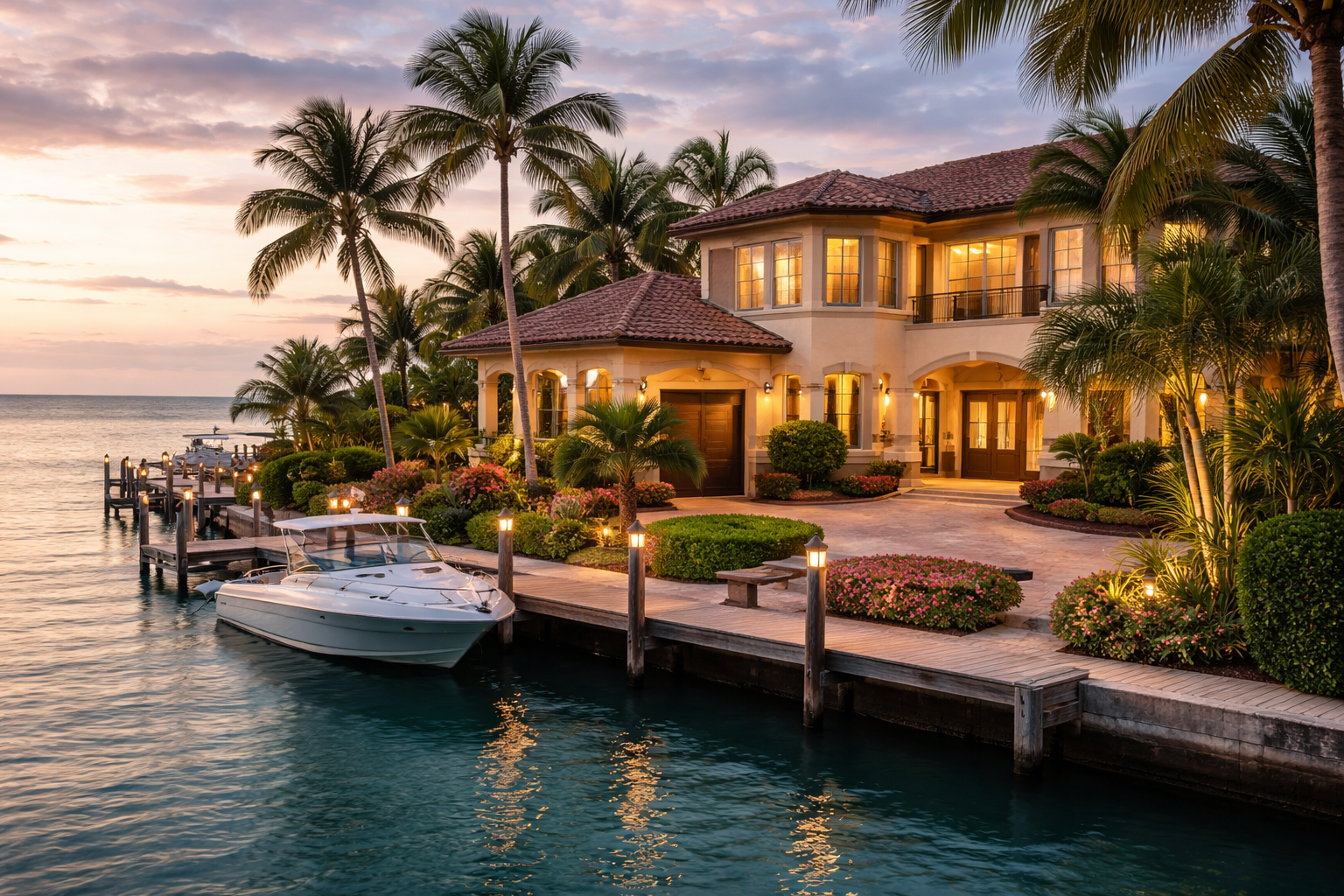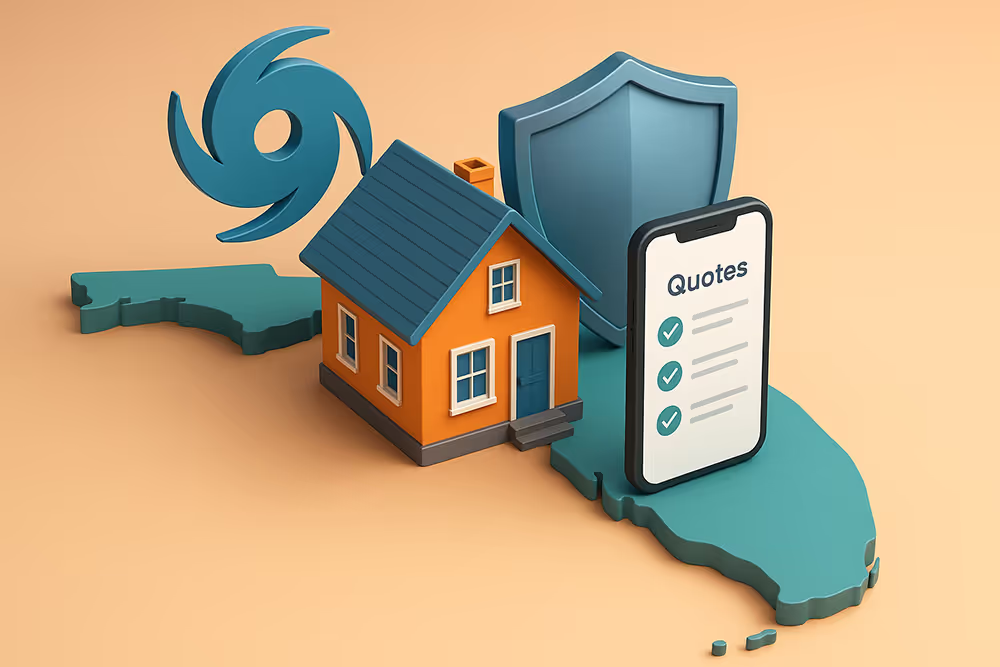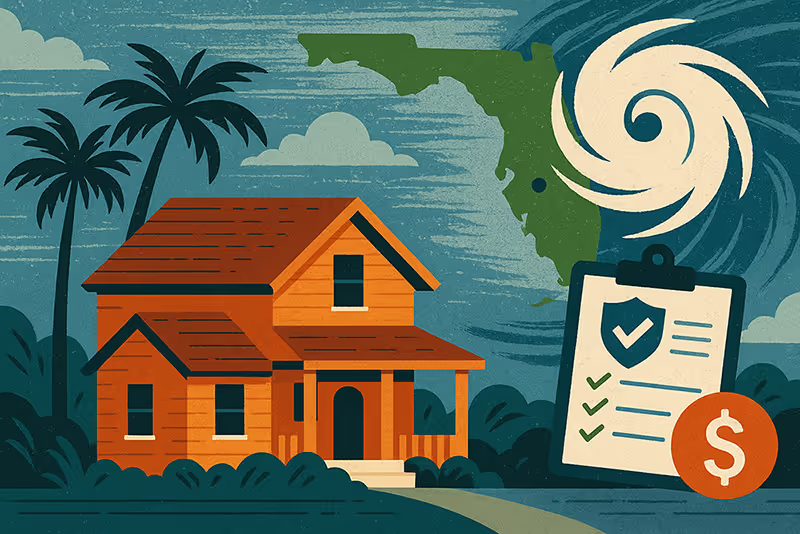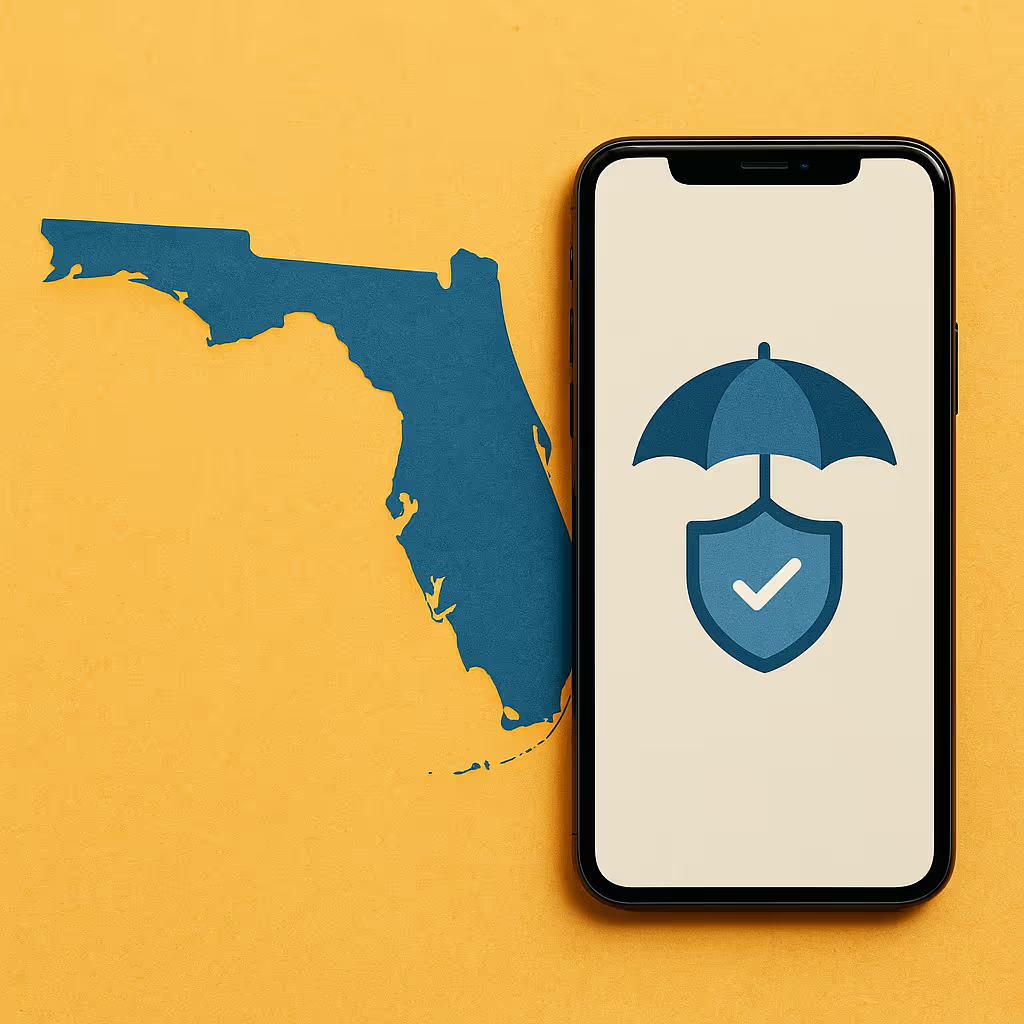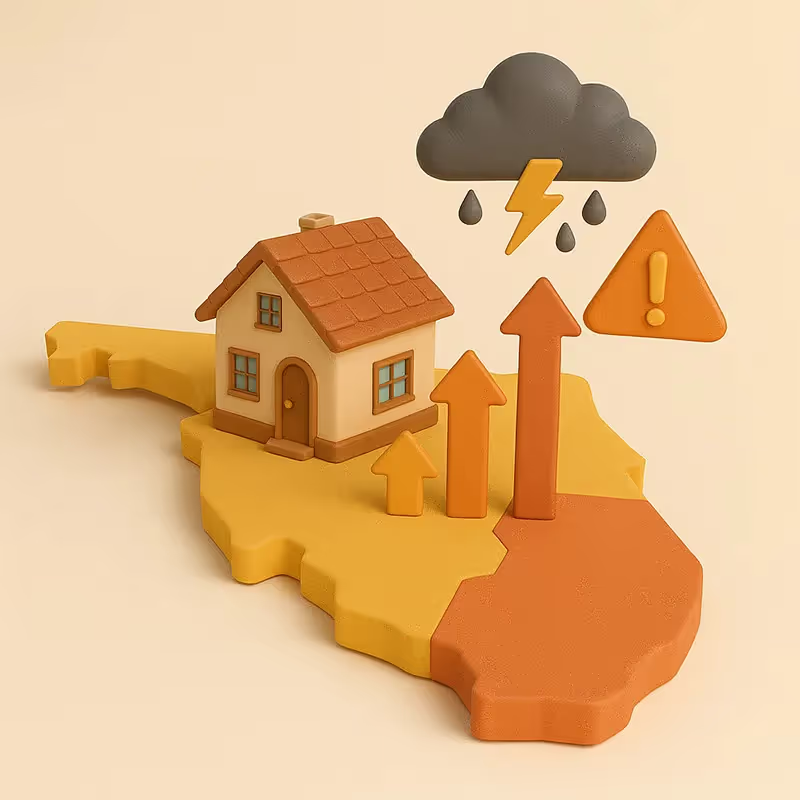Get Grants & Lower Your Premium: Florida’s My Safe Home Program 2025 Guide

The My Safe Florida Home grant helps Florida homeowners strengthen their homes against hurricanes by offering free wind-mitigation inspections and up to $10,000 in matching funds for structural upgrades. Eligible primary residences built before 2008 may qualify, with low-income homeowners potentially receiving full funding.
These improvements can also lead to significant insurance premium discounts once completed and reported.
Florida homes take a beating during hurricane season. Roofs, windows, garage doors. Any weak point can become a real problem when storms hit. That’s where the My Safe Florida Home program steps in. It’s not new, but in 2025 it’s more important; and more competitive, than ever.
This guide breaks down what the program offers, who qualifies, and why it might be one of the smartest moves you can make as a Florida homeowner.
What Is the Program?
The My Safe Florida Home (MSFH) program is designed to make your house safer during hurricanes—and, ideally, reduce what you pay for homeowners insurance.
It does this in two main ways:
- Free Wind-Mitigation Inspection: A licensed inspector evaluates your home’s roof, windows, doors, and overall structural attachments. The goal is to identify how well your home could hold up in a major storm, and where it's most vulnerable.
This report is yours to keep, and it often includes suggestions for specific upgrades that can help you qualify for insurance discounts. - Matching Grant for Home Hardening: If your home qualifies, the state offers a matching grant to cover part of the cost of those upgrades (up to $10,000). For every $1 you spend, the state covers $2. Low-income homeowners may qualify for the full $10,000 with no personal contribution required.
This isn’t about replacing your windows because they’re old. It’s about installing impact-rated windows that can take windborne debris without shattering. It’s not about patching a roof. It’s about reinforcing it so it won’t peel off in 120-mph winds.
Why does that matter? Because insurance companies know that homes with these upgrades are far less likely to suffer catastrophic damage during a storm. That means fewer claims and fewer payouts, and they often pass some of those savings on to you.
If your premiums have gone up (and if you live in Florida, they probably have), this program offers a way to fight back: strengthen your home and possibly lower your rates at the same time.
And when you’re ready to update your insurance file with your new inspection report, Worth Insurance can help you figure out how much of a discount you should expect—and which carriers are most likely to offer it.
What Kind of Upgrades?
After the inspection, most homeowners get a list of weak points: places where wind or water could break through. The program prioritizes structural improvements that directly reduce the risk of storm damage.
Here’s what commonly shows up:
- Roof-to-wall reinforcements: Older homes often have simple nail attachments that can pull loose in high winds. Upgrading to hurricane straps or clips makes a huge difference in roof stability.
- Secondary water barriers: This is a layer beneath your roof shingles that helps block water intrusion if the outer roofing fails. It’s especially important in homes with older or shallow-pitch roofs.
- Impact-rated doors and windows: These are tested to withstand flying debris during a hurricane. If your current windows or sliding doors aren't rated, they’re likely a top recommendation.
- Garage door strengthening: A weak garage door can collapse inward during a storm, creating dangerous pressure that lifts the roof. Reinforcing it or replacing it with an impact-rated version adds serious protection.
- Gable-end bracing: Homes with gabled roofs are vulnerable at the triangular end sections. Bracing those areas can keep wind from pushing the wall inward and causing a collapse.
These aren’t cosmetic upgrades. They’re structural, and they usually cost thousands out of pocket. But through MSFH, you’re only responsible for a fraction of the cost. That makes it more doable, especially if you were already planning a roof replacement or window update.
And here’s the part many people overlook: these exact upgrades are what insurers reward. They're directly tied to wind-mitigation credits, which means once the work is done, you may qualify for a sizable drop in your premium.
Who Can Apply?
Not every Florida homeowner qualifies for My Safe Florida Home. The program targets older, more vulnerable properties, specifically ones that could benefit most from structural upgrades.
To be eligible, your home must meet these criteria:
- It must be your primary residence: You have to live in the home full-time. Vacation homes, second properties, or rentals aren’t included.
- Site-built construction only: Manufactured or mobile homes don’t qualify. Your home must be built on-site using traditional construction methods.
- Single-family or townhouse-style: Condos and multi-unit buildings are excluded.
- Homestead exemption in place: This exemption confirms the home is your permanent legal residence and is required for the application.
- Insured value under $700,000: This is based on your homeowner policy—not market value. Worth Insurance can help clarify if your current insured value meets this cap.
- Built before January 1, 2008: Homes built after that date generally follow modern wind-resistant building codes and aren’t eligible for the grant.
There’s also a major shift in how applications are prioritized:
The state now strongly favors low-income and senior homeowners. To be considered for this priority, you need to complete a short age and income survey during the application process.
While it's technically optional, skipping it may push your application to the back of the line; or out of the running entirely, if funding runs out. So if you fall into either group, don’t wait.
Still not sure if your home qualifies? Reach out to Worth Insurance. We’ll help you confirm your eligibility, estimate your insured value, and explain how MSFH could affect your insurance costs long term.
How the Money Works
If your home qualifies, the My Safe Florida Home program can cover part (or sometimes all) of your upgrade costs.
Here’s how it breaks down:
- Standard matching grant:: For every $1 you spend, the state adds $2, up to a maximum of $10,000. So if you put in $5,000 of your own money, you could get $15,000 worth of work done.
- Low-income households: If you meet certain income thresholds, the state may cover the full $10,000 with no match required. You’ll still need to go through the full process, but you won’t have to pay out of pocket.
Either way, the process is reimbursement-based. That means:
- You get the inspection
- You apply for the grant
- You complete the upgrades using a licensed contractor
- You pass a final inspection
- Then you submit receipts and get paid back
There are no upfront checks or prepayments. You need to be able to fund the work first. This is especially important if you’re not low-income.
And here’s the tricky part: funding is limited. Even with extra money added in 2025, demand is high and the state processes applications in batches. There’s a waitlist. Sometimes a long one.
If you’re serious about applying, don’t wait. Get the inspection done early. Fill out the age/income survey. And line up a contractor in advance if possible.
If you want help figuring out how much the work might cost; or how to time it around your insurance renewal, Worth Insurance can talk you through it. We’ve helped homeowners align their upgrades with their policies for the biggest return.
Is It Worth It?
Yes, but not just for the grant.
After the upgrades, your insurance company may lower your premiums. That’s where this program really pays off. Wind mitigation credits are some of the most substantial discounts available in Florida’s homeowners market.
But here’s the thing: those savings aren’t automatic. You’ll need to submit your updated inspection to your insurer and sometimes shop around to see who offers the best post-upgrade rate.
That’s where we come in.
Worth Insurance Can Help
At Worth Insurance, we’ve seen homeowners save hundreds—sometimes thousands—per year after completing the MSFH upgrades. We know which carriers respond well to specific improvements. And we can help you time your policy reviews around your home upgrades so you get the savings as soon as possible.
If you’ve already had your inspection, or you're mid-renovation, reach out. We’ll walk you through how to submit your new mitigation report and compare quotes that reflect your improved risk profile.
If you haven’t started yet, no problem. We can help you estimate how much you stand to save if you go through the program. That way, you know if the investment makes sense before committing to the work.
Bottom line: If you own a home in Florida, ignoring this program is like leaving money (and safety) on the table.
Let’s make sure you don’t.
Contact Worth Insurance today to see how your home upgrades can lead to better protection and better premiums.
If you’re a homeowner in Florida, having the right insurance coverage is essential to protect your investment from hurricanes, floods, and other unexpected events. Learn more about the different coverage options, policy requirements, and ways to save by visiting our detailed guide to Florida homeowners insurance.
To see how Worth can reduce your risk.
Get a Free Quote


